| 19 February |
• yesterday • tomorrow |
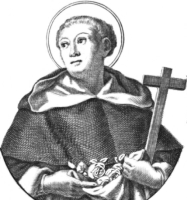
• Alvarez of Zamora
• Albaro, Alvaro
Alvarez joined the Dominicans at Cordova, Spain in 1368. Renowned and well-travelled preacher, well known in Andalusia and Italy. Pilgrim to the Holy Lands. Preached Crusade. Personal confessor, spiritual guide and political advisor to Queen Catherine. In charge of the education of young King John II. Opposed the Avignon pope Peter de Luna. Reformed many of the practices common at court.
Founded Escalaceli (Ladder of Heaven), a Dominican house of strict observance in the mountains around Cordova; it became a well known center of piety and learning. Alvarez spent his days there preaching, teaching, begging alms in the street, and spending his nights in prayer. In the gardens of the house he set up a series of oratories with images of the Holy Lands and Passion, similar to modern Stations of the Cross.
There are many wonderful stories attatched to Alvarez, which include:
• Angels are reported to have helped built Escalaceli, moving stone and wooden building materials to the site during the night, placing them where workmen could easily get them during the day.
• Once when the entire food stocks for the house consisted of a single head of lettuce, he gathered all the brothers at table, gave thanks for the meal, and sent the porter to the door; the porter found a stanger leading a mule loaded with food. After unloading the mule, the stranger and the animal disappeared.
• Alvarez once found a beggar dying alone in the street. He wrapped the poor man in his own cloak, and carried him back to Escalaceli. When he arrived at the house and unwrapped the cloak, instead of man, he found a crucifix. It still hangs in Escalaceli.
• A bell in the chapel with Alvarez's relics rings by itself just before the death of anyone in the house.
• Attempts were made to move Alvarez's relics to Cordova, but each try led to violent storms that kept the travellers bottled up until they gave up their task, leave the bones where they are.
Lisbon, Portugal or Cordova, Spain (sources vary)
c.1430 at Escalaceli near Cordova, Spain of natural causes, and buried there
22 September 1741 by Pope Benedict XIV (cultus confirmed)
God of mercy, you endowed Blessed Alvarez with the gifts of penance and divine love. With the help of his prayers and example may we always bear the suffering of Christ in our bodies and your love in our hearts. We ask this through our Lord Jesus Christ, your Son, who lives and reigns with you and the Holy Spirit, one God, for ever and ever. - General Calendar of the Order of Preachers
https://catholicsaints.info/blessed-alvarez-of-cordova/
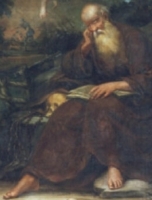
• Conrad of Noto
• Conrad Confalonieri
• Corrado, Currau, Kerrew
Born to the nobility. Married to Euphrosyne, the daughter of a nobleman; the two led a pious life in the world. One day while hunting, Conrad ordered attendants to set fire to some brush in order to flush out the game. A strong wind carried the flames to nearby fields, forests, towns and villages, and Conrad fled in panic. An innocent peasant was imprisoned, tortured into a confession and condemned to death for the fire. Remorseful, Conrad stepped forward to confess, saving the man. He then paid for the damaged property, selling nearly all he owned in order to raise the cash.
Conrad and his wife saw the hand of God in the dramatic events, and chose to give the poor everything they had left. They then separated, she to a Poor Clare monastery, he to a group of Franciscan tertiary hermits. Conrad lived such a life of piety that his reputation for holiness spread quickly. He had the gift of healing. Visitors destroyed his solitude, so he fled to a the valley of Noto, Italy in Sicily where he lived 36 years in prayer as a hermit.
Legend says that when the Bishop of Syracuse visited him, the bishop asked if Conrad had anything to offers guests. Conrad said he would check in his cell. He returned carrying newly made cakes, which the bishop accepted as a miracle. Conrad returned the bishop's visit, and made a general confession to him. As he arrived, he was surrounded by fluttering birds, who escorted him back to Noto.
c.1290 at Piacenza, Italy
• 19 February 1351 at Noto, Sicily of natural causes while kneeling before a crucifix
• body found incorrupt in 1485
• relics formally enshrined in 1485, indicating a local cultus
• in 1515 Pope Leo X approved the celebration of his feast by the town of Noto, Italy
• in 1625 Pope Urban VIII approved celebration by all Franciscans
• against hernias
• Cacciatori, Italy
• Calendasco, Italy
• Noto, Sicily, city of
• Noto, Sicily, diocese of
• Franciscan hermit with a cross upon which birds perch
• bearded, old man with a tau staff, bare feet, Franciscan cincture, and small birds fluttering around him
• old man with stags and other animals around him
https://catholicsaints.info/saint-conrad-of-piacenza/
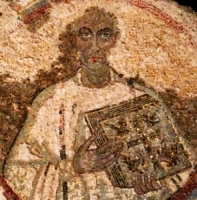
• 8 January (calendar of Carthage)
• 28 November (as one of the Martyrs of North Africa)
Fifth century North African church father. Known to have been living in Carthage c.407. Deacon c.421. Friend, spiritual student and correspondent with Saint Augustine of Hippo who dedicated some of his writings to Quodvultdeus. Bishop of Carthage. When Carthage was invaded by Arian Vandals under Genseric, Quodvultdeus and the bulk of his priests were loaded onto non-seaworthy ships and sent into exile, and an Arian patriarch was installed as bishop. Though they should have sank, the ship carried the Quodvultdeus and his men to safety to Naples. Quodvultdeus continued his ministry, fought the Pelagian heresy in Campagna, but never made it back to North Africa. The Arians would not permit a Catholic bishop to be appointed to Carthage for the next 15 years.
late 4th century
c.450 in Naples, Italy
A tiny child is born, who is a great king. Wise men are led to him from afar. They come to adore one who lies in a manger and yet reigns in heaven and on earth. When they tell of one who is born a king, Herod is disturbed. To save his kingdom he resolves to kill him, though if he would have faith in the child, he himself would reign in peace in this life and for ever in the life to come.
Why are you afraid, Herod, when you hear of the birth of a king? He does not come to drive you out, but to conquer the devil. But because you do not understand this you are disturbed and in a rage. To destroy one child whom you seek, you show your cruelty in the death of so many children.
You are not restrained by the love of weeping mothers and fathers mourning the deaths of their sons, nor by the cries and sobs of the children. You destroy those who are tiny in body because fear is destroying your heart. You imagine that if you accomplish your desire you can prolong you own life, though you are seeking to kill Life himself.
The children die for Christ, though they do not know it. The parents mourn for the death of martyrs. The Christ child makes of those as yet unable to speak fit witnesses to himself. But you, Herod, do not know this and are disturbed and furious. While you vent your fury against the child, you are already paying him homage, and do not know it.
To what merits of their own do the children owe this kind of victory? They cannot speak, yet they bear witness to Christ. They cannot use their limbs to engage in battle, yet already they bear off the palm of victory. - from a sermon by Bishop Saint Quodvultdeus about the Holy Innocents
https://catholicsaints.info/saint-quodvultdeus/
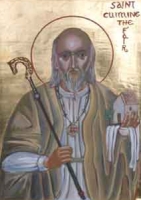
Cuimino, Cumino, Cummiano, Cumianus, Cumméne, Cummian
Monk at the monastery of San Colombano in Bobbio, Italy. He was known for his personal piety, as a peacemaker, and for his devotion to the Rule of his Order; he set a proper example Christian life, strongly advocated for Roman observances, and served as counselor to many in the region during the time of the Lombard Kingdom.
7th century Ireland
• c.735 of natural causes
• buried in the lower church in Bobbio, Italy in a sepulcher built by King Liutprand who greatly admired Cumiano's piety
by Pope Leo XII (cultus confirmation and extension to the diocese of Bobbio, Italy)
Here lie the sacred limbs of Cumian;
whose soul, entering heaven, rejoices with the angels.
He was great in dignity, nobility, and beauty.
Ireland sent him as an old man to the lands of Italy:
located in Bobbio, constrained by love of the Lord,
where, by preserving the teaching of the venerable Columban,
keeping watch, fasting, tireless, constantly praying,
for four olympiads and the course of one year
he lived so felicitously that he is believed to be only fortunate,
gentle, wise, pious, peaceful to all brothers.
He lived for 90 years
and one period of five years and four months altogether.
But, most excellent Father, be a powerful intercessor
for the most glorious King Liutprand, who
has devotedly decorated your tomb with precious stone,
so that it may be manifest where your kindly body is buried.
– translation of the inscription on the tomb of Saint Cumiano
https://catholicsaints.info/saint-cumiano-of-bobbio/
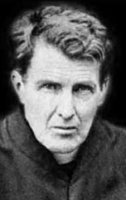
Son of the Lord Chancellor of Ireland, and raised in the Church of Ireland; his mother was Catholic. Successful barrister in Dublin, Ireland. When his father died in 1885, he inherited the family fortune, quit his career, travelled, and became known as the best dressed man in Dublin.
During his travels he spent several months at an Orthodox monastery, and considered joining the Orthodox Church and the brotherhood, but upon his return to Ireland he converted to Catholicism, joining the Church in 1896. Joined the Jesuits on 7 September 1900. Ordained on 28 July 1907. Professor at Clongowes Wood College where he was considered an indifferent teacher but received the gift of miraculous healing. Visited thousands of the sick in hospital, their homes and at the school.
8 May 1861 in Dublin, Ireland
19 February 1933 at Saint Vincent's Nursing Home in Dublin, Ireland of natural causes
• 13 May 2017 by Pope Francis
• the beatification miracle involved the healing of a young boy named Michael Collins; Michael was paralyzed; Father John healed him by touching his leg and praying over him for two hours
• beatification recognition celebrated in the Saint Francis Xavier Church, Dublin, Ireland, presided by Cardinal Angelo Amato
https://catholicsaints.info/blessed-john-sullivan/
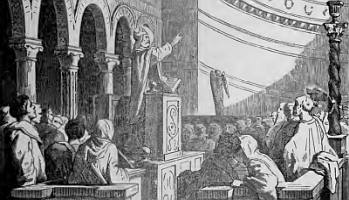
Barbas, Barbato
Priest at an early age. Fiery preacher whose flock turned on him because of his zeal; he finally resigned his parish and returned home. There he fought against a resurgent paganism involving the worship of a golden viper and animal skin hung in a tree. For unrelated reasons, the army of Emperor Constans, besieged Benevento; the locals soon listened to the preacher, renounced their errors, and stopped their idolatrous practices. Barbatus assured them that the siege would end; it did. The saint cut down the tree with his own hand, and melted down the golden viper to make a chalice for the altar. Bishop on 10 March 663. Eradicated superstition in the state. Assisted in a council called by Pope Agatho at Rome, Italy in 680. Attended the Sixth General Council held at Constantinople against the Monothelites in 681.
c.610 at Benevento, Italy
29 February 682 at Benevento, Italy of natural causes
• Benevento, Italy, city of
• Benevento, Italy, diocese of
https://catholicsaints.info/saint-barbatus-of-benevento/
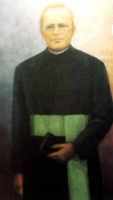
prisoner P22099
12 June as one of the 108 Martyrs of World War II
Born to a poor farm family, and never made it past elementary school. Served in the army. Joined the Brothers of the Sacred Heart of Jesus in 1927, making his first profession on 8 September 1928 and his solemn vows on 10 March 1938 in Poznan, Poland. Served in the office of the archbishop of Poznan. Sacristan of the church of Saint Elizabeth in Lwów, Poland (modern Lviv, Ukraine). Arrested by the Gestapo, he was deported and imprisoned at the concentration camps of Mauthausen, then Gusen and finally Dachau. He contracted a fatal case of typhus when he volunteered to care for other prisoners who were suffering from the disease. Martyr.
5 March 1904 in Jerka, Wielkopolskie, Poland
19 February 1945 at the Nazi concentration camp Dachau, Oberbayern, Germany of typhus and abuse
13 June 1999 by Pope John Paul II
https://catholicsaints.info/blessed-jozef-zaplata/
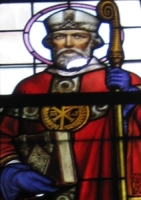
• Boniface of Brussels
• Boniface of Losanna
• Bonifacio...
Educated at the Universities of Paris, France. Cistercian monk at Cambre Abbey near Brussels, Belgium. Noted for his learning, he taught at universities in Paris, France from 1222 to 1229, and then in Cologne, Germany from 1229 to 1231. Bishop of Lausanne, Switzerland in 1231. One of the bishops at the First Council of Lyon. In his later years he retired to his old monastery of Cambre to spend his latter days as a prayerful monk.
1183 in Brussels, Belgium
1260 at La Cambre Abbey, Brussels, Belgium of natural causes
1702 by Pope Clement XI
https://catholicsaints.info/saint-boniface-of-lausanne/
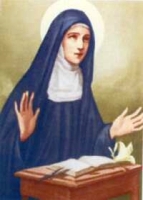
• Elizabeth Batholomea Picenardi
• Elisabeth Picenardi of Mantua
• Bartolomea Picenardi
• Elisabetta...
Born wealthy. Received some formal education, instruction in meditation by her mother, and was taught Latin by her father so she could read the Little Office of the Blessed Virgin Mary. Her mother died when Elizabeth was young, and she and a sister joined the third order of the Servites. Elizabeth was noted for her holiness, humility and gentleness, and she attracted many other young women to the Servites, many of whom formed a community under Elizabeth's direction.
1428 at Mantua, Italy
• 19 February 1468 of natural causes
• miracles reported at her tomb
10 November 1804 by Pope Pius VII (cultus confirmation)
https://catholicsaints.info/blessed-elizabeth-of-mantua/
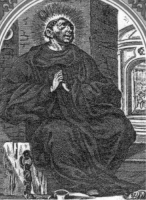
Born to the Swabian nobility. Benedictine monk at Einsideln, Germany. First abbot of the reconstructed Hirsau monastery in the Black Forest area on 7 March 1066. During his short abbacy, the house began its rise to become famed for the piety and learning of its brothers. However, Frederick's insistence on strict adherence to the Benedictine Rule caused some of the monks to slander him and have him deposed in 1069. He stayed on for a while as a monk, but eventually retired to Ebersberg monastery near Heidelberg, Germany.
early 11th century Swabia (in modern Germany)
8 May 1071 at the Ebersburg monastery near Heidelberg, Germany of natural causes
https://catholicsaints.info/blessed-frederick-of-hirsau/
Luqi, Lucy
Lay woman in the apostolic vicariate of Guizhou, China. She was the youngest child in her family, and grew up loving to read and learn; her mother taught her to spin. She served as a catechist in her parish; her priest asked her to use that experence to teach in the local school. When the family moved so her brother could study medicine, her new priest asked her to continue teaching, and to include adult women, as well. When her mother died, Lucia decided to support the work of the Paris Foreign Missions Society, which led to her death with them. One of the Martyrs of Guizhou.
17 January 1815 in Mainyang, Sichuan, China
beheaded on 19 January 1862 by Kaiyang, Guizhou, China
1 October 2000 by Pope John Paul II
https://catholicsaints.info/saint-lucia-yi-zhenmei/
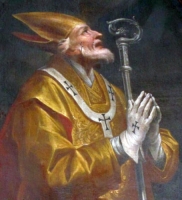
• Mansuetus Savelli
• Mansueto...
2 September (Ambrosian Rite)
Born to the Italian nobility. Archbishop of Milan, Italy c.672. He revitalized the faith in his diocese, and wrote a treatise against the heresy of Monothelitism.
Rome, Italy
c.690
https://catholicsaints.info/saint-mansuetus-of-milan/
• Beatus of Valcavado
• Beato, Bie
Monk at Saint Martin's monastery, Liébana, Spain. Wrote and preached against the Adoptionist heresy, and worked to bring it's believers back to orthodox Christianity; co-author of Liber Adversus Elipandum as part of the work. When the Adoptionist heresy lost momentum, Beatus retired to the monastery of Valcavado to pray and write scripture commentaries and hymns.
8th century
798 of natural causes
https://catholicsaints.info/saint-beatus/
Prodo
As a young layman, he lived a very ascetic life, spending his days roaming from town to town in order to worship in all the churches he could find. Monk. Known for his extensive learning and knowledge, his wide reading, and his ability to speak on many topics.
c.970 in Bisignano, Calabria, Italy
https://catholicsaints.info/saint-proclus-of-bisignano/

• Auxibius of Cyprus
• Ausibio...
Convert, baptized by Saint Mark the Evangelist. Bishop of Soli, Cyprus, ordained by Saint Paul the Apostle.
1st century of natural causes
https://catholicsaints.info/saint-auxibius/
Benedictine monk at Saint-Foi-de-Conques, Rouergue. The monastery was destroyed by Norsemen in 862, and George fled to Vabres in the diocese of Rodez, France. In his later years he was elected bishop of Lodève, France.
at Rodez, France
c.884 of natural causes
https://catholicsaints.info/saint-george-of-lodeve/
Dositeus was a layman who served as a page to a senior army officer. During a pilgrimage to Jerusalem, a painting of Hell caused him to re-evaluate his life and led to his becoming a monk in Palestine. He devoted himself so completely to giving up a worldly life that he destroyed his health, and died soon after entering the monastery.
https://catholicsaints.info/saint-dositeus/
Bishop of Jerusalem in the late 3rd and early 4th century. Legend says he is the one who brought the Theban Legion to Christianity. Martyred in the persecutions of Diocletian.
c.304 of natural causes
https://catholicsaints.info/saint-zambdas-of-jerusalem/
Odhran
Saint Patrick's chariot driver. Legend says that one day on the road, he spotted what appeared to be an ambush. He traded places with Patrick without telling him why, and died from the attack meant for his passenger.
c.452
https://catholicsaints.info/saint-odran/
A peasant girl who died fighting off a rape by the feudal lord of her district.
Troyes, France
1135 near Troyes, France
1203 by Pope Innocent III
https://catholicsaints.info/saint-belina/
An unknown number of monks and lay people massacred together for their faith by Saracens led by Mundhir III.
c.509 in Palestine
https://catholicsaints.info/martyrs-of-palestine-19-february/
Gabins
Member of the imperial Roman nobility. Brother of Pope Caius. Father of Saint Susanna. Relative of the emperor Diocletian. Martyr.
c.295
https://catholicsaints.info/saint-gabinus/
Sixth century monk in the monastery of Pentucla in Palestine. Abbot of his house.
555 of natural causes
https://catholicsaints.info/saint-conon-of-alexandria/
Martyr.
https://catholicsaints.info/saint-publius-of-north-africa-19-february/
Martyr.
martyred in Africa, data unknown
https://catholicsaints.info/saint-julian-the-martyr/
Bishop of Antibes, France.
c.450
https://catholicsaints.info/saint-valerius-of-antibes/
Martyr.
https://catholicsaints.info/saint-marcellus-of-north-africa/
Son of Cuana.
Tibohin, Ireland
https://catholicsaints.info/saint-baoithin/
CatholicSaints.Info Portable Edition